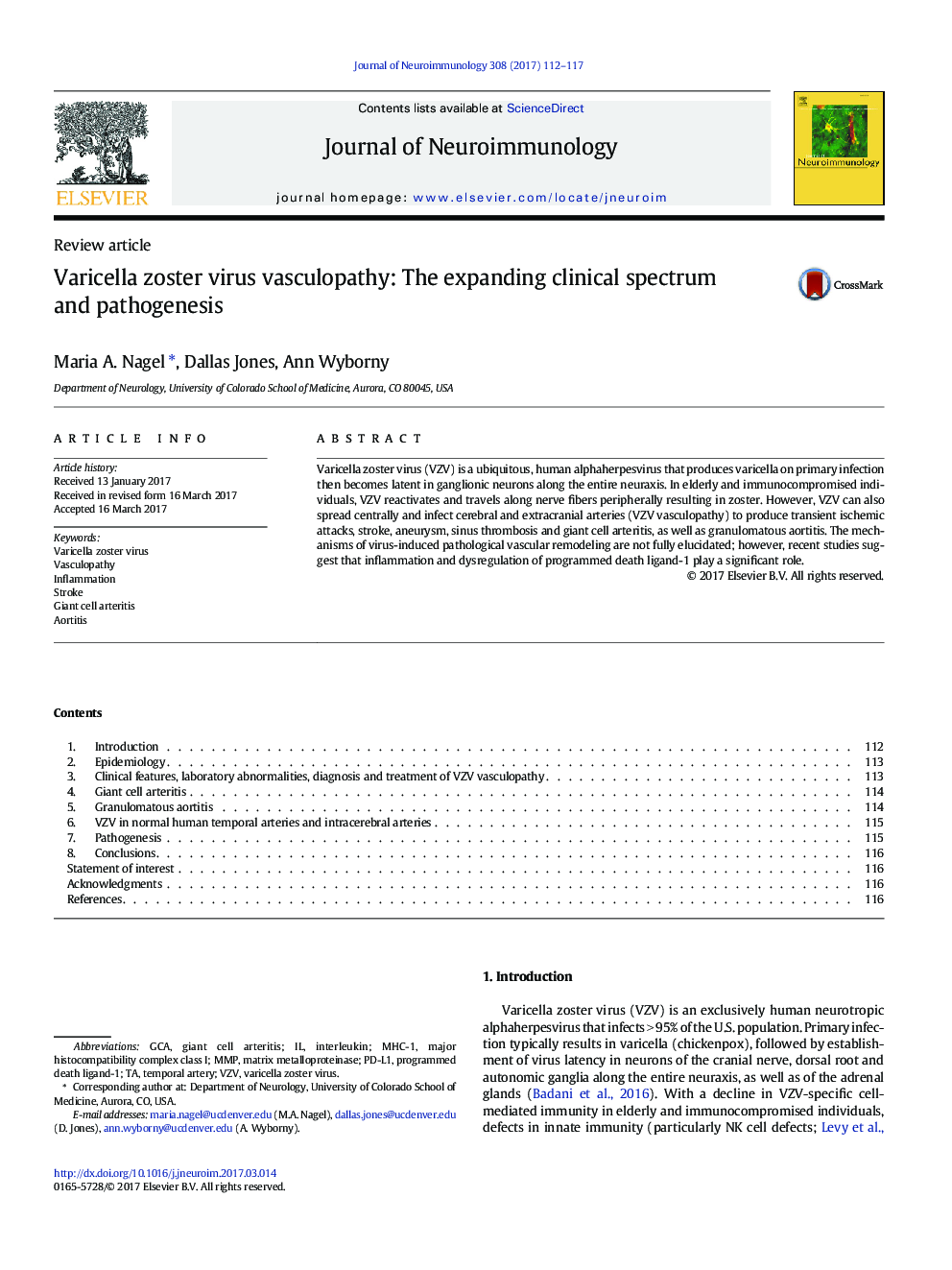| کد مقاله | کد نشریه | سال انتشار | مقاله انگلیسی | نسخه تمام متن |
|---|---|---|---|---|
| 5630114 | 1580367 | 2017 | 6 صفحه PDF | دانلود رایگان |
- VZV vasculopathy produces stroke, giant cell arteritis and granulomatous aortitis.
- VZV vasculopathy is due to productive virus infection of arteries.
- VZV-induced arterial inflammation contributes to pathological vascular remodeling.
- Downregulation of programmed death ligand-1 contributes to persistent vasculitis.
- Downregulation of MHC-I leads to ineffective virus clearance.
Varicella zoster virus (VZV) is a ubiquitous, human alphaherpesvirus that produces varicella on primary infection then becomes latent in ganglionic neurons along the entire neuraxis. In elderly and immunocompromised individuals, VZV reactivates and travels along nerve fibers peripherally resulting in zoster. However, VZV can also spread centrally and infect cerebral and extracranial arteries (VZV vasculopathy) to produce transient ischemic attacks, stroke, aneurysm, sinus thrombosis and giant cell arteritis, as well as granulomatous aortitis. The mechanisms of virus-induced pathological vascular remodeling are not fully elucidated; however, recent studies suggest that inflammation and dysregulation of programmed death ligand-1 play a significant role.
217
Journal: Journal of Neuroimmunology - Volume 308, 15 July 2017, Pages 112-117
